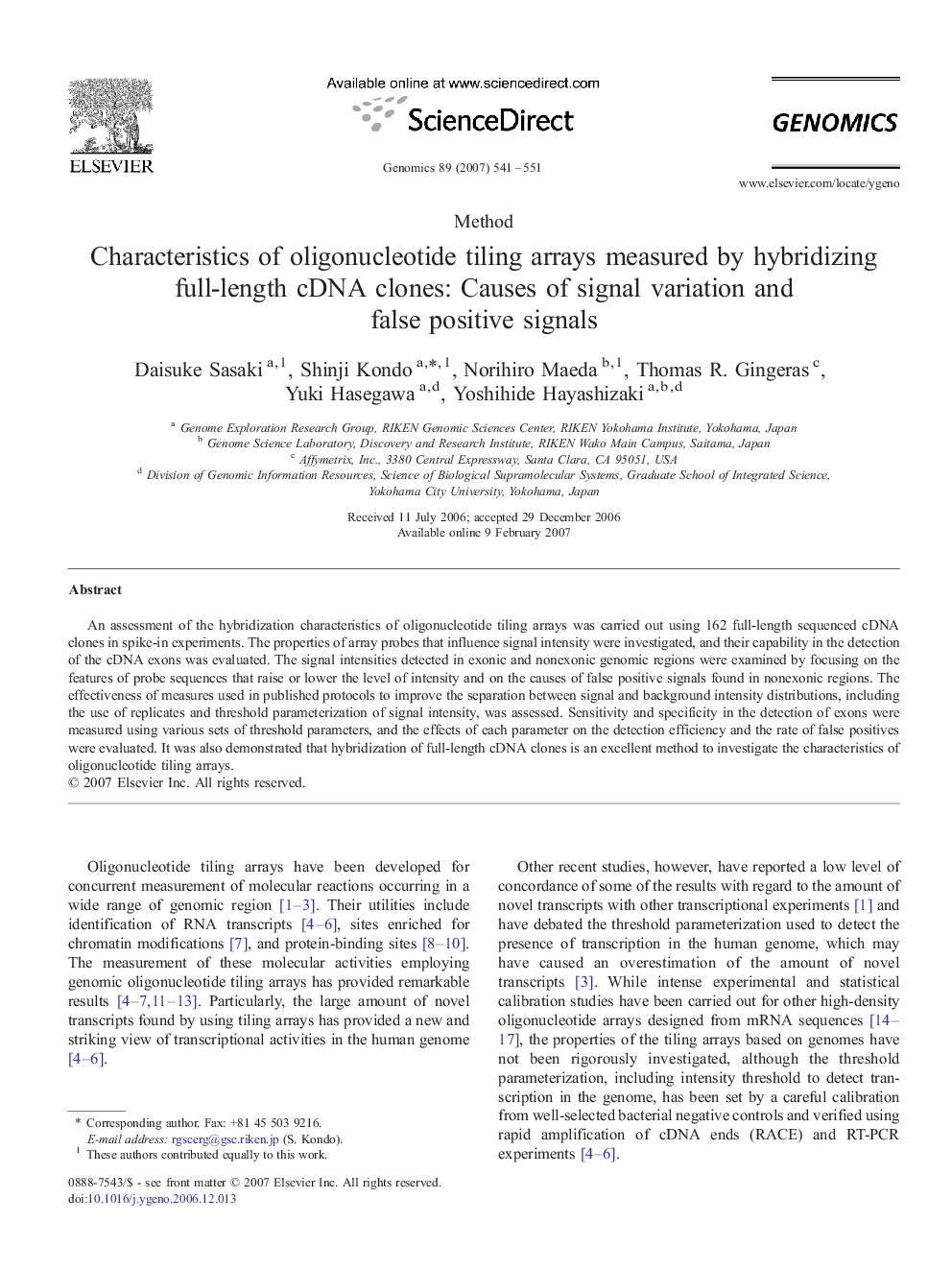| Article ID | Journal | Published Year | Pages | File Type |
|---|---|---|---|---|
| 2821192 | Genomics | 2007 | 11 Pages |
An assessment of the hybridization characteristics of oligonucleotide tiling arrays was carried out using 162 full-length sequenced cDNA clones in spike-in experiments. The properties of array probes that influence signal intensity were investigated, and their capability in the detection of the cDNA exons was evaluated. The signal intensities detected in exonic and nonexonic genomic regions were examined by focusing on the features of probe sequences that raise or lower the level of intensity and on the causes of false positive signals found in nonexonic regions. The effectiveness of measures used in published protocols to improve the separation between signal and background intensity distributions, including the use of replicates and threshold parameterization of signal intensity, was assessed. Sensitivity and specificity in the detection of exons were measured using various sets of threshold parameters, and the effects of each parameter on the detection efficiency and the rate of false positives were evaluated. It was also demonstrated that hybridization of full-length cDNA clones is an excellent method to investigate the characteristics of oligonucleotide tiling arrays.
